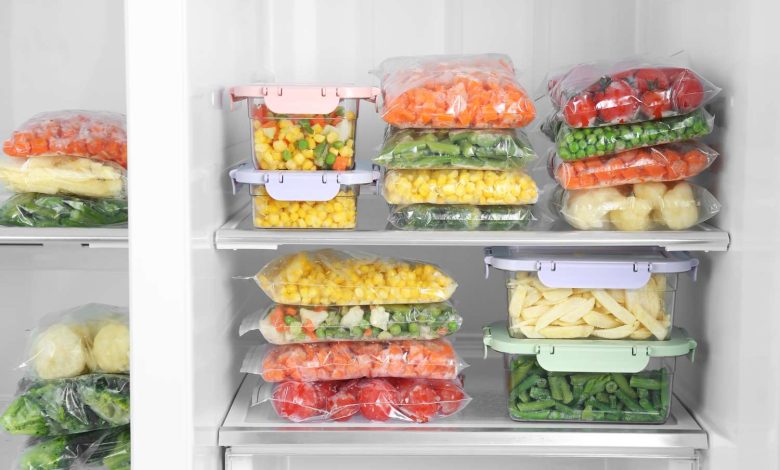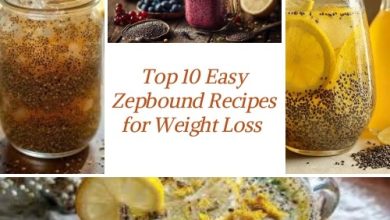Eggs. Garlic. Cheese. 8 Unexpected Foods That Can Go in the Freezer

When you think of freezing food, items like meat, vegetables, and bread might come to mind. But what if we told you that some of the most surprising items in your kitchen—like eggs, garlic, and even cheese—can be frozen safely to reduce waste, extend shelf life, and save money?
We reveal eight unexpected foods that not only can go in your freezer—but should. Whether you’re meal prepping, cutting down on spoilage, or just love making the most of what you buy, this list will change the way you think about freezing food.
1. Eggs
Surprised? Most people are. But yes, you can freeze eggs—just not in the shell.
How to Freeze Eggs:
Crack the eggs into a bowl and whisk them until the yolk and white are just blended. Pour the mixture into ice cube trays or silicone moulds and freeze. Once solid, transfer to a freezer-safe bag or container and label with the date.
Why Freeze Eggs?
Eggs can go bad quickly if not used in time. Freezing them allows you to stock up when they’re on sale, especially during holidays. They’re perfect for baking, scrambled eggs, and omelettes—just defrost overnight in the fridge.
Pro Tip: You can also freeze egg whites and yolks separately. Add a pinch of salt to yolks before freezing to prevent them from becoming gelatinous.
2. Garlic
While garlic has a relatively long shelf life, it can sprout or dry out before you get to the end of the bulb. Freezing garlic not only preserves its flavour but also saves time when cooking.
How to Freeze Garlic:
- Whole Cloves: Peel them and freeze in an airtight container or freezer bag.
- Minced or Pureed: Blitz garlic with a bit of oil in a food processor, spoon into ice cube trays, freeze, and store in a labelled freezer bag.
Why Freeze Garlic?
It’s incredibly convenient. Imagine tossing a frozen garlic cube straight into your pan or sauce—no chopping, peeling, or sticky fingers required.
Pro Tip: Don’t freeze unpeeled garlic or full bulbs—they’ll go mushy and lose flavour.
3. Cheese
Many assume cheese will crumble or change texture when frozen, and while that’s partly true, it really depends on the type of cheese—and how you plan to use it.
Best Cheeses to Freeze:
- Hard Cheeses like cheddar, gouda, Swiss, and mozzarella freeze well.
- Shredded Cheese freezes better than blocks, as it’s easier to thaw and use in dishes.
How to Freeze Cheese:
Shred or slice into portions, wrap tightly in plastic wrap or foil, and place in an airtight freezer bag. Always label with the type and date.
Why Freeze Cheese?
Great for cooking—think pizza, pasta, casseroles, and grilled cheese. Just don’t expect the same texture for eating raw, as freezing can make cheese crumbly.
Pro Tip: Add a teaspoon of cornstarch to shredded cheese before freezing to prevent clumping.
4. Avocados
Yes, even avocados can be frozen—perfect if you bought too many or they ripened all at once.
How to Freeze Avocados:
- Halved or Chunks: Peel and pit, then sprinkle with lemon or lime juice. Wrap tightly and store in freezer bags.
- Mashed: Add lemon juice to mashed avocado and freeze in portioned containers.
Why Freeze Avocados?
Ideal for smoothies, guacamole, or spreading on toast. The texture may become slightly mushy when thawed, so they’re best used blended or mashed.
Pro Tip: Frozen avocados are not great for salads or slicing—reserve them for recipes where texture matters less.
5. Cooked Rice and Grains
Cooked rice, quinoa, farro, and barley freeze beautifully, making weeknight dinners much easier.
How to Freeze Grains:
Cool cooked grains completely, portion into freezer bags or containers, flatten for easy stacking, and label. They last up to 3 months.
Why Freeze Grains?
Saves time and reduces the temptation to waste leftovers. Just reheat in the microwave or on the stove with a splash of water.
Pro Tip: Freezing rice reduces the risk of bacterial growth (like Bacillus cereus) that occurs when rice is left out too long.
6. Milk and Dairy
Most people are shocked to learn you can freeze milk and other dairy products with minimal impact—if done right.
What Dairy Freezes Well:
- Milk (cow’s, oat, almond, soy)
- Yoghurt
- Cream (full-fat works best)
How to Freeze Dairy:
Pour into a freezer-safe container, leaving some room for expansion. Shake well after thawing to re-emulsify. Freeze in small portions for easy use.
Why Freeze Dairy?
Great for smoothies, cooking, and baking. Don’t freeze milk in glass bottles—they may crack.
Pro Tip: Thawed dairy may separate—blend it or whisk vigorously to restore texture.
7. Nuts and Seeds
Nuts contain oils that can go rancid if stored too long in warm conditions. Freezing them keeps them fresh for months—without affecting flavour or texture.
How to Freeze Nuts:
Store in airtight freezer-safe bags or jars. Use within 6–12 months.
Why Freeze Nuts?
Perfect for long-term storage, especially if you buy in bulk. This applies to almonds, walnuts, pecans, chia, flaxseed, and pumpkin seeds.
Pro Tip: Freeze nut flours (like almond flour) to prevent them from spoiling too quickly.
8. Herbs in Oil
Fresh herbs like basil, parsley, and coriander wilt quickly, but freezing them in oil helps preserve their aroma and taste.
How to Freeze Herbs:
- Chop finely and place in ice cube trays.
- Cover with olive oil and freeze.
- Store cubes in labelled freezer bags.
Why Freeze Herbs in Oil?
The oil acts as a natural preservative and creates ready-to-use cubes for sautés, soups, or sauces. Much better than dried herbs when it comes to flavour.
Pro Tip: Avoid freezing watery herbs like lettuce or cucumber—those don’t work well at all.
Honourable Mentions: A Few More to Try
If you’re on a freezing spree, here are a few other underrated items you might not know could go in your freezer:
- Hummus: Freeze in small containers and stir after thawing.
- Tomato paste: Freeze leftover paste in tablespoon-sized portions.
- Wine: Freeze leftover wine in cubes for cooking.
- Bread crumbs: Homemade or store-bought crumbs freeze well and stay fresh.
- Butter: Freezes for up to 6 months with no loss of quality.
Foods You Shouldn’t Freeze
Not everything is freezer-friendly. Some foods just don’t make the cut due to texture changes or spoilage risks:
- High-water vegetables like cucumber, lettuce, or radish (they turn soggy).
- Cream cheese (becomes grainy).
- Soft fruits like watermelon (become mushy).
- Fried foods (lose crispness).
- Mayonnaise-based sauces (separate and become unpleasant).
Always consider whether the food will retain both its flavour and texture after freezing.
Smart Freezing Tips
Before you throw everything in the freezer, follow these freezing best practices:
✅ Label Everything
Use freezer-safe labels with the name and date. Frozen foods can start to look similar over time.
✅ Portion Wisely
Freeze in small quantities. It’s easier to defrost only what you need.
✅ Use Freezer Bags or Containers
Air is the enemy of frozen food. Use vacuum-sealed bags or remove as much air as possible to prevent freezer burn.
✅ Don’t Refreeze
Never refreeze food that’s been fully thawed, especially meat and dairy. This increases the risk of bacterial growth.
Final Thoughts
Your freezer is a powerful tool—not just for leftovers and ice cream, but for reducing waste, saving time, and getting creative with food storage. By freezing items like eggs, garlic, and cheese, you can extend the shelf life of staples you use daily. It might seem unusual at first, but once you experience the convenience, you’ll wonder why you didn’t start sooner.
So the next time you’re eyeing those overripe avocados or that half-used block of cheddar, freeze it instead of tossing it. Small changes like these not only help your wallet but also help reduce food waste—one frozen cube at a time.




